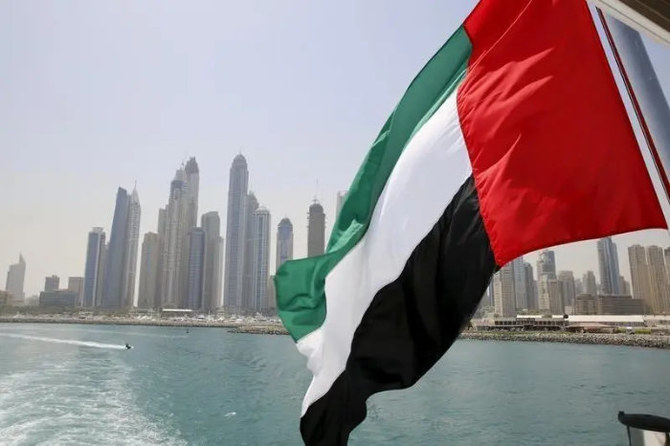
Given the confluence of challenges facing the nations of the world, including climate change, the pandemic, domestic instability, regional tensions and geopolitical malaise, it can be extremely difficult for governments to prioritize their interventions, let alone move cautiously to mitigate the unintended consequences while promoting effective solutions.
At present all governments in the Arab world are laser-focused on getting ahead of COVID-19, and rightly so. Their efforts in ongoing pandemic mitigation, and other public-health interventions, will likely be rewarded by projected growth of 4 percent in Middle East and North Africa economies this year, despite low vaccination penetration in some places, uneven recoveries, and shrinking fiscal and monetary space.
Regardless, placing the pandemic atop an already long list of priorities is imperative. After all, global health crises such as COVID-19 tend to expose significant inequalities and systemic vulnerabilities that typically compound socioeconomic exclusion, and accelerate the politicization of even the most basic, common-sense interventions.
In MENA, however, focusing on the pandemic alone will do very little to solve what has become the region’s biggest challenge: its desperate youth.
Even after a decade of rising unemployment, declining socioeconomic conditions, and gloomy future prospects, which were the principal drivers of the 2011 uprisings, most of the region’s governments have yet to move decisively to address the accumulating frustrations of their youth populations.
Unfortunately the pandemic and, in some cases, the increasingly visible effects of climate change are now causing even more widespread disruptions to the lives of young people, and women, in the Arab world in a manner the International Labor Organization describes as “systematic, deep and disproportionate.”
New hardships pile on top of old ones as a result of declining household incomes, disrupted learning opportunities, diminished job prospects and fractured livelihoods, as a disaffected “protest generation” gives way to the “lockdown generation.”
School closures, partial or otherwise, have left an almost incalculable deficit in the educational trajectories of the region’s youth, while deep digital divides in remote-learning facilities worsened the economic, geographic and technological disadvantages affecting the most vulnerable.
Already, the Arab world’s spending on education is higher than the global average but the quality of learning, skills uptake and overall outcomes are still dismally low.
COVID-19 has worsened this situation, and will continue to do so, despite the promising strides taken in recent years to modernize education delivery and expand remote-learning capacities by boosting information and communications technology infrastructure and related sectors.
However, an explosion of e-learning initiatives is no panacea for the millions without access to education or the means to continue their studies. This affects their job prospects, quality of life and the trajectories of their civic or political participation.
Persistent inequalities in access to opportunities is also widening the gender gap in Arab countries — where it was already the second-widest in the world — as women and girls are more likely to drop out of school or stop seeking employment.
Beyond education, the region also has an endemic underemployment and unemployment problem as a result of flawed policies and political machinations, over which its youth has little say or power.
In fact, high levels of youth unemployment across the MENA region have become such a huge problem that they have created a new demographic of young women and men completely disengaged from education or labor. Not only do they place a burden on limited state resources, due to their dependence on social safety nets, their extreme living conditions are worsened by severe socioeconomic exclusion. This means that they are more vulnerable to radicalization by extremist groups.
Others risk a treacherous journey north, where many fall prey to traffickers and organized criminals seeking to profit from desperate people fleeing unending despair.
Prior to the pandemic, about a quarter of the region’s youth was classified as “not in employment, education or training,” or NEETs for short. Now that number has surged to about a third of the Arab world’s most populous demographic.
For countries on the peripheries of regional hot spots, surging refugee or migrant flows create as many woes as the endless political malaise, stagnant economies and ceaseless conflicts do in the nations the migrants leave behind.
The result of all this is a recipe for disaster, a massive powder keg of social disaffection and apathy necessitating unprecedented interventions and novel approaches to address the well-known root causes.
The sheer magnitude of the crises that would surely unfold as a result of continued inaction should be more than sufficient to induce governments to update antiquated social contracts, accelerate bottom-up and top-down approaches to private-sector empowerment, and ultimately transform millions of job seekers into powerful job creators.
At present, however, most Arab governments are rapidly losing their room for maneuver as an uneven global recovery and growing indebtedness continue to strain budgets already burdened by spending on much-needed social safety nets during these unusual times.
Granted, erudite interventions typically come with severe political and economic penalties, which often discourage the region’s political elite from implementing them. After all, it is much easier to simply write another check or collateralize future economic growth by accruing even more debt to sustain patronage networks and generate clientelistic support.
In rare cases where such a sociopolitical system is no longer sustainable, what Arab countries could face is perfectly encapsulated in Lebanon’s woes and Egypt’s relative successes.
In Lebanon’s case, decades of economic mismanagement and reckless monetary policies resulted in one of the most severe peace-time crises, which the World Bank has termed a “deliberate depression.” Policy inaction, the lack of a functioning executive authority, and political intransigence have driven more than half of the population into poverty and unemployment has skyrocketed, while inflation and currency woes complicate possible fiscal or monetary interventions.
The result is a colossal confluence of runaway crises likely to trigger widespread social unrest, given the country’s history of multiple conflicts and a prolonged civil war. Worse yet, the ruling elite find themselves trapped in a scheme of their own making, fearing that pursuing effective and much-needed policies would mean relinquishing the grip on power and influence that is safeguarded by Lebanon’s confessionalism.
Tragically, the only viable path left open to the authorities in Beirut, which was once known as the “Paris of the Middle East,” is persisting with a woeful status quo, because any proposed solutions that do not include a revisiting of the country’s flawed constitutional basis will simply be drowned out by an endless political back-and-forth in the corridors of power.
Meanwhile, Lebanon is bleeding the resources and human capital that are integral to its revival, as continued policy inaction hampers any efforts to address sky-high unemployment and record levels of poverty.
Egypt, on the other hand, has fared pretty well in its efforts to navigate the COVID-19 crisis, all while reducing unemployment and increasing per capita gross domestic product by reining in costly civil-sector wages and trimming expenditure on social safety nets. To remain on track, however, Egypt’s economy must continue to grow faster than its labor force, which is highly unlikely given its high population growth rate and the long-term socioeconomic effects of the vulnerabilities exposed or intensified by COVID-19.
Of course, these gains have come at a cost, in terms of personal liberties, a less free press, and a worrying preference for heavy-handed state security interventions at the expense of inclusivity, dialogue and compromise. It remains to be seen how long Egypt’s successes at dealing with unemployment and improving living standards will continue to keep the risks of social and political instability at bay, unlike the experiences in Tunisia, Iraq and, to a lesser extent, Jordan.
Clearly, attempts to contain social instability by increasing public expenditure on civil-sector employment and generous subsidies has not worked. COVID-19, and at some point climate change-induced disruptions, should bury this kind of thinking or policy-setting because all it ever earns Arab countries is higher deficits and extremely constrained budgets that only narrow the policy options for effective interventions.
Ultimately, a lack of policy maneuvering room, the rising prospects of social unrest, stagnant economies and worsening poverty often leave Arab countries at the mercy and whims of a self-serving political class more concerned with its own survival than the state’s welfare.
Hafed Al-Ghwell is a non-resident senior fellow with the Foreign Policy Institute at the John Hopkins University School of Advance International Studies. He is also senior adviser at the international economic consultancy Maxwell Stamp and at the geopolitical risk advisory firm Oxford Analytica, a member of the Strategic Advisory Solutions International Group in Washington DC and a former adviser to the board of the World Bank Group.
Disclaimer: Views expressed by writers in this section are their own and do not necessarily reflect Arab News" point-of-view











